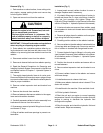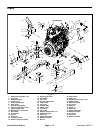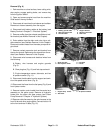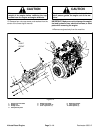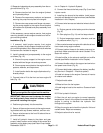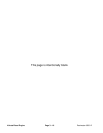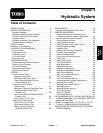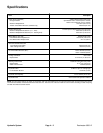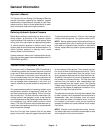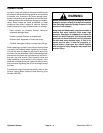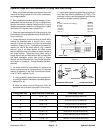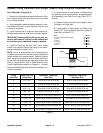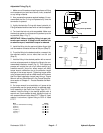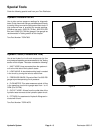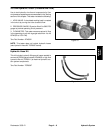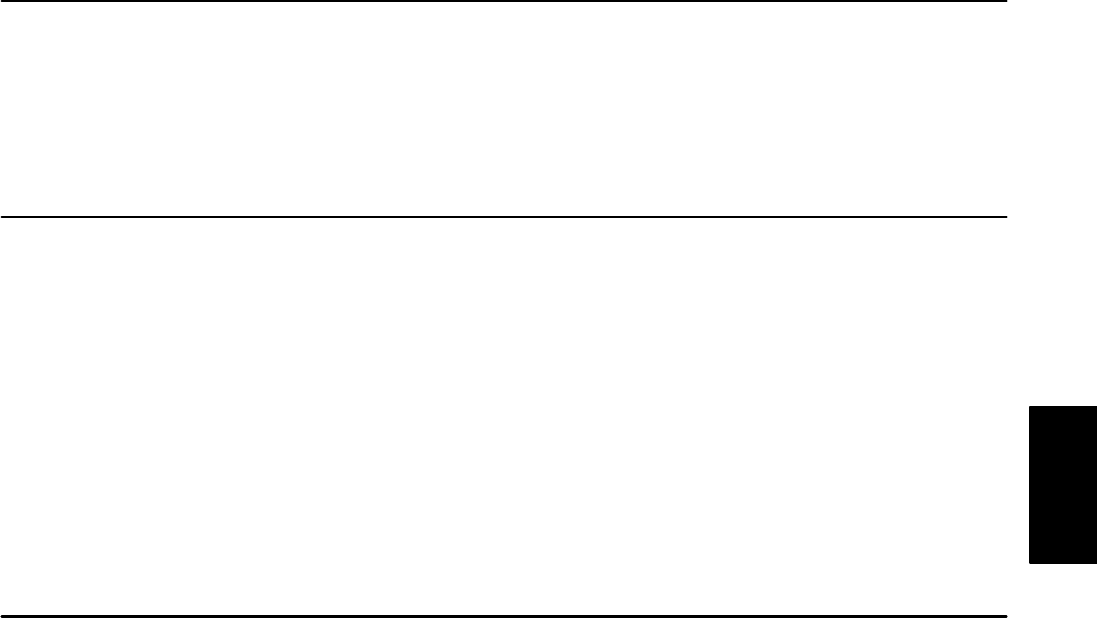
Reelmaster 3550−D Hydraulic SystemPage 4 − 3
General Information
Operator’s Manual
The Traction Unit and Cutting Unit Operator’s Manuals
provide information regarding the operation, general
maintenance and maintenance intervals for your Reel-
master machine. Refer to these publications for addi-
tional information when servicing the machine.
Relieving Hydraulic System Pressure
Before disconnecting or performing any work on the hy-
draulic system, all pressure in the hydraulic system
must be relieved. Park machine on a level surface, lower
cutting units fully, stop engine and apply parking brake.
To relieve hydraulic pressure in traction circuit, move
traction pedal to both forward and reverse directions. To
relieve hydraulic pressure in steering circuit, rotate
steering wheel in both directions.
System pressure in mow circuit is relieved when the cut-
ting units are disengaged (reel enable/disable switch in
DISENGAGE position).
To relieve hydraulic pressure in lift circuit, fully lower the
cutting units to the ground. Turn ignition switch to OFF.
NOTE: Moving steering wheel with engine off may un-
seat implement relief valve. If steering or lift circuits ap-
pear weak or inoperative after machine is returned to
service, repeat relieving hydraulic system pressure pro-
cedure.
Traction Circuit Component Failure
The traction circuit on Reelmaster 3550−D machines is
a closed loop system that includes the piston (traction)
pump, two (2) front wheel motors and the rear wheel mo-
tor. If a component in the traction circuit should fail, de-
bris and contamination from the failed component will
circulate throughout the traction circuit. This contamina-
tion can damage other components in the circuit so it
must be removed to prevent additional component fail-
ure.
The recommended method of removing traction circuit
contamination would be to temporarily install the Toro
high flow hydraulic filter (see Special Tools in this chap-
ter) into the circuit. This filter should be used when con-
necting hydraulic test gauges in order to test traction
circuit components or after replacing a failed traction cir-
cuit component (e.g. traction (piston) pump or wheel
motor). The filter will ensure that contaminates are re-
moved from the closed loop and thus, do not cause addi-
tional component damage.
Once the Toro high flow hydraulic filter kit has been
placed in the circuit, raise and support the machine with
all drive wheels off the ground. Then, operate the trac-
tion circuit to allow oil flow throughout the circuit. The fil-
ter will remove contamination from the traction circuit
during operation. Because the Toro high flow filter is bi−
directional, the traction circuit can be operated in both
the forward and reverse direction. The filter should be
removed from the machine after contamination has
been removed from the traction circuit. See Filtering
Closed−Loop Traction Circuit in the Service and Repairs
section of this chapter for additional information on us-
ing the Toro high flow hydraulic filter.
The alternative to using the Toro high flow hydraulic filter
kit after a traction circuit component failure would be to
disassemble, drain and thoroughly clean all compo-
nents, tubes and hoses in the traction circuit. If any de-
bris remains in the traction circuit and the machine is
operated, the debris can cause additional circuit compo-
nent failure.
NOTE: If traction circuit contamination exists, the trac-
tion pump case drain could allow contaminates to enter
other hydraulic circuits on the machine.
Hydraulic
System



